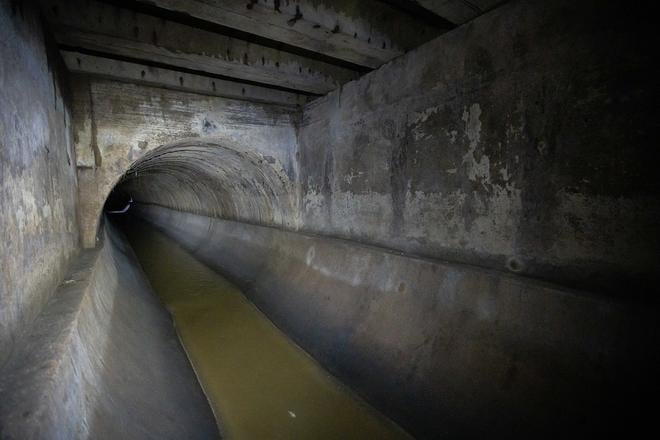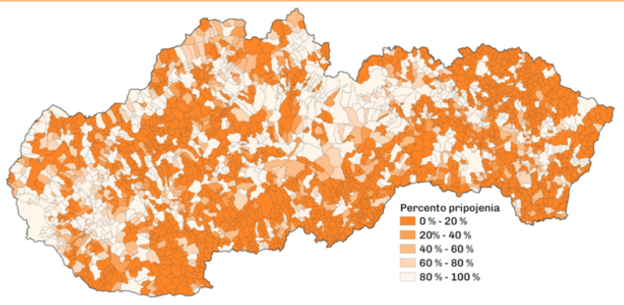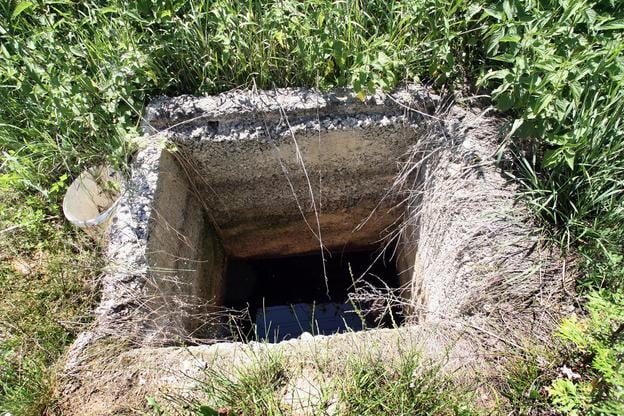If construction continues at the current pace, towns and villages will not entirely be connected until 2057 at the earliest, according to a study published earlier this year by the Environment Ministry's Institute of Environmental Policy.
Slovakia is already not fulfilling its obligations to the European Union and will lose millions of euros due to fines, reports the daily Sme.
Even bigger towns
In 2022, 71 percent of Slovaks had a public sewage connection according to Eurostat. This is far below the EU average which is 81 percent. Slovakia also lags behind other V4 countries - the Czech Republic, Poland, and Hungary. Of municipalities with fewer than 2,000 residents, only 33 percent of them has connection.
However, there are even examples of larger towns such as Trebišov in eastern Slovakia with around 23,000 people, and Detva in central Slovakia with almost 14,000 people, and in each only around 70 percent of the residents are connected.
Also, not all residents of Kolárovo with more than 10,000 and Tvrdošovce with more than 5,000, both in south-western Slovakia, are connected, although the situation is improving in both. When it comes to regions, Trenčín, Nitra, Banská Bystrica and Košice are lagging the most. And although the Bratislava Region is the best in this regard, there are villages in its vicinity that do not have sewage systems.
People without sewage system connection rely on a cesspool or their own wastewater treatment plant. There are half a million cesspools and 20,000 household wastewater treatment plants in Slovakia. In some sparsely populated areas, they will remain commonplace even in the future as constructing a sewage system would not be economical.
However, there are risks associated with cesspools. Some households illegally discharge the waste into nature, streams, or onto their neighbours' land. They can also pollute the soil, damage ecosystems and transmit diseases.
In Slovakia, the property owner must pay for the connection, which discourages some as the initial investment in a cesspool is lower. However, operating one is more expensive because the waste has to be regularly removed.
According to a European directive, agglomerations with more than 2,000 residents in Slovakia should have had a sewage system by 2015. The new directive, which has entered into force this year, sets the threshold even lower, to 1,000.
Slovakia is very far from the achieving the goal. The European Commission expects a 98 percent connection, while Slovakia's national goal is 85 percent. The country is already facing lawsuits for failing to meet its obligations. According to analysts, it will have to pay millions in fines between 2030 and 2035.
Why it's going so slow
According to the study, Slovakia relies on EU funds a lot. However, during the 2014-2024 period, only two calls were announced, with the other in 2021 which was already too late.
Things are not looking any better now either. The first call for the current 2021-2027 period was announced in 2023.
Then there is the problem of municipalities with fewer than 2,000 residents relying on the domestic environmental fund, which lacks money, and thus approves only a quarter of applications a year. To complicate things further, the consent of landowners through which the sewer will run is necessary. Plots are often owned by several people and transfer is slow. Small municipalities also lack people to prepare projects, collect documentation, obtain permits, announce a tender and more.
Analysts say one solution would be if a water company takes care of the process for several municipalities. In some places it is already being done.


 Sewage system in Bratislava. (source: Jozef Jakubčo)
Sewage system in Bratislava. (source: Jozef Jakubčo)
 The map shows the percentage of people in Slovakia with connection to the sewage system. (source: Environment Ministry)
The map shows the percentage of people in Slovakia with connection to the sewage system. (source: Environment Ministry)
 Illustrative image of a cesspool. (source: TASR)
Illustrative image of a cesspool. (source: TASR)